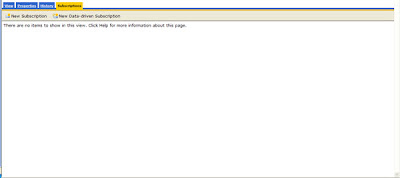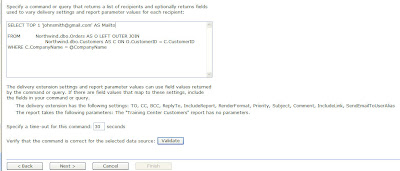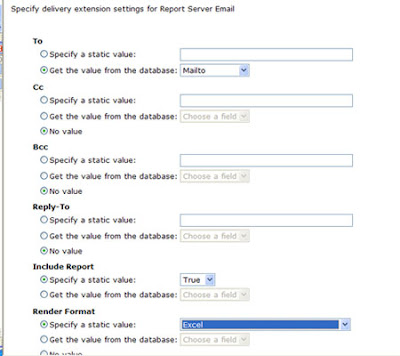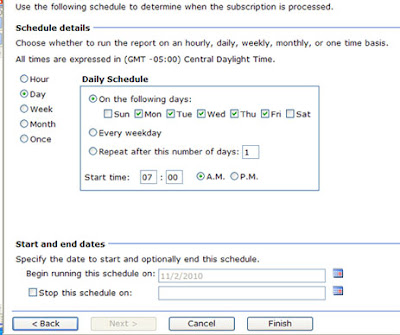In this post I will demonstrate how easy it is to create an ASP MVC site with basic CRUD operations on the Chinook database.
- Start Visual Studio and create a new project using the ASP.Net MVC 2 template. I'm a proponent of Unit Testing, but for today's demo let's do not create the unit tests.
- Right-click the Models folder and select Add->New Item->Data->ADO.Net Entity Data Model.
- Name the Model Chinook.edmx and choose the Artists table to import into the model.
- Right-click the Controllers folder and select Add->Controller. Name the controller ArtistController and check the box to Add action methods for our CRUD operations.
- Next, In the Index function select all artists from the Artists table in the Chinook database like this...
public ActionResult Index()
{
using (ChinookEntities chinook = new ChinookEntities())
{
var allArtists = from artists in chinook.Artists
orderby artists.Name
select artists;
return View(allArtists.ToList());
}
}
- Right-click "View(allArtists)" and select Add View->Check the box for Create Strongly-Typed View->Select ChinookArist.Models.Artist->Select List for View Content->Hit the Add button.
- Now add a link to our controller in the Site.Master and we're ready to go.
- Run the project and hit the link to Artists and you get a list of all artists in the table.
To add the details view to our project add the following snippet to the Details(int id) function in ArtistController.cs...
public ActionResult Details(int id)
{
using (ChinookEntities chinook = new ChinookEntities())
{
var artist = (from a in chinook.Artists
where a.ArtistId == id
select a).First();
return View(artist);
}
}
Next, right-click "Details" and select Add View. Be sure to select Details for our View content drop-down. Voila, a Details.aspx page is create for us.
Editing a record works in a similar manner. Add the following code to ArtistController...
public ActionResult Edit(int id)
{
using (ChinookEntities chinook = new ChinookEntities())
{
var artist = (from a in chinook.Artists
where a.ArtistId == id
select a).First();
return View(artist);
}
}
This will return the record to edit. Right-click the Edit and follow the steps to create and edit page. In addition, you will need the following which will actually perform the editing...
[HttpPost]
public ActionResult Edit(int id, FormCollection collection)
{
try
{
using (ChinookEntities chinook = new ChinookEntities())
{
var artist = (from a in chinook.Artists
where a.ArtistId == id
select a).First();
artist.Name = collection[1].ToString();
chinook.SaveChanges();
}
return RedirectToAction("Index");
}
catch
{
return View();
}
}
To creating a new record use the following...
[HttpPost]
public ActionResult Create(FormCollection collection)
{
try
{
using (ChinookEntities chinook = new ChinookEntities())
{
Artist artist = new Artist();
artist.Name = collection[0].ToString();
chinook.AddToArtists(artist);
chinook.SaveChanges();
}
return RedirectToAction("Index");
}
catch
{
return View();
}
}
Right-click Create and a new aspx page is created for us.
Deleting a record is similar to editing in that it requires two functions...
public ActionResult Delete(int id)
{
using (ChinookEntities chinook = new ChinookEntities())
{
var artist = (from a in chinook.Artists
where a.ArtistId == id
select a).First();
return View(artist);
}
}
and...
[HttpPost]
public ActionResult Delete(int id, FormCollection collection)
{
try
{
using (ChinookEntities chinook = new ChinookEntities())
{
var artist = (from a in chinook.Artists
where a.ArtistId == id
select a).First();
chinook.DeleteObject(artist);
chinook.SaveChanges();
}
return RedirectToAction("Index");
}
catch
{
return View();
}
}
Once again, right-clicking the Delete function and following the prompts will create a delete.aspx page for us.
In just a few minutes I have created a simple, yet fully functional MVC application with complete CRUD operations on a table.














